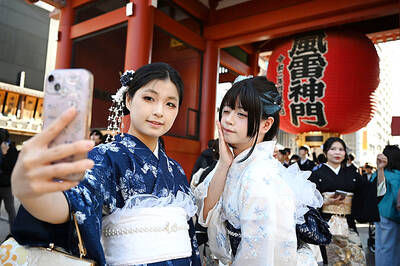The US economy faces risks from a potential resurgence of COVID-19 and from the failure so far of the US Congress to provide additional financial support for struggling individuals and businesses.
That judgement emerged from a survey released yesterday by the National Association for Business Economics (NABE) of 52 forecasters who were polled last month.
Among the forecasters, 55 percent said they regarded a second wave of COVID-19 cases as the most serious threat.
Twenty percent said they thought a lack of further government economic aid would pose the biggest risk.
The inability of Democrats and Republicans to forge a compromise has meant that unemployed Americans are no longer receiving a federal unemployment benefit. Support for small businesses has also expired. States and localities, many of which have suffered sharp declines in tax revenue, are struggling, too, without further federal assistance.
Similar to many other economists, the NABE’s forecasters have estimated that the US economy, as measured by GDP, grew at a 25 percent annual rate in the July-to-September quarter. That would be the largest quarterly gain on records dating to 1947.
However, it would follow an even bigger contraction in the April-to-June quarter, when COVID-19 paralyzed much of the US economy.
For the current quarter, the NABE panel forecast a 4.9 percent annual growth rate.
The recovery from the pandemic recession, in the view of the forecasters, would remain sluggish in coming months. A majority of them do not expect GDP to return to its pre-pandemic levels until sometime in 2022.
For all of this year, the panel expects GDP to decline 4.3 percent. That would be the US economy’s first full-year contraction since a 2.5 percent fall in 2009 at the end of the Great Recession.
For next year, the forecasters expect growth of 3.6 percent.
“NABE panelists have become more optimistic, on balance, but remain concerned about a potential second-wave of COVID-19,” said Eugenio Aleman, an economist at Wells Fargo Bank and the chair of the NABE survey panel.
On the danger that the US economy might suffer a double-dip recession, in which GDP would shrink again, 51 percent of the forecasters estimated the chances at 20 percent or less. Only 12 percent saw the likelihood at 50 percent or more.
More than half the panelists believe that 10 to 20 percent of the jobs that have been lost to the pandemic recession are permanently gone, with many hotels, restaurants, retailers and entertainment venues unable to reopen.

Shiina Ito has had fewer Chinese customers at her Tokyo jewelry shop since Beijing issued a travel warning in the wake of a diplomatic spat, but she said she was not concerned. A souring of Tokyo-Beijing relations this month, following remarks by Japanese Prime Minister Sanae Takaichi about Taiwan, has fueled concerns about the impact on the ritzy boutiques, noodle joints and hotels where holidaymakers spend their cash. However, businesses in Tokyo largely shrugged off any anxiety. “Since there are fewer Chinese customers, it’s become a bit easier for Japanese shoppers to visit, so our sales haven’t really dropped,” Ito

The number of Taiwanese working in the US rose to a record high of 137,000 last year, driven largely by Taiwan Semiconductor Manufacturing Co’s (TSMC, 台積電) rapid overseas expansion, according to government data released yesterday. A total of 666,000 Taiwanese nationals were employed abroad last year, an increase of 45,000 from 2023 and the highest level since the COVID-19 pandemic, data from the Directorate-General of Budget, Accounting and Statistics (DGBAS) showed. Overseas employment had steadily increased between 2009 and 2019, peaking at 739,000, before plunging to 319,000 in 2021 amid US-China trade tensions, global supply chain shifts, reshoring by Taiwanese companies and

Taiwan Semiconductor Manufacturing Co (TSMC, 台積電) received about NT$147 billion (US$4.71 billion) in subsidies from the US, Japanese, German and Chinese governments over the past two years for its global expansion. Financial data compiled by the world’s largest contract chipmaker showed the company secured NT$4.77 billion in subsidies from the governments in the third quarter, bringing the total for the first three quarters of the year to about NT$71.9 billion. Along with the NT$75.16 billion in financial aid TSMC received last year, the chipmaker obtained NT$147 billion in subsidies in almost two years, the data showed. The subsidies received by its subsidiaries —

Taiwan Semiconductor Manufacturing Co (TSMC) Chairman C.C. Wei (魏哲家) and the company’s former chairman, Mark Liu (劉德音), both received the Robert N. Noyce Award -- the semiconductor industry’s highest honor -- in San Jose, California, on Thursday (local time). Speaking at the award event, Liu, who retired last year, expressed gratitude to his wife, his dissertation advisor at the University of California, Berkeley, his supervisors at AT&T Bell Laboratories -- where he worked on optical fiber communication systems before joining TSMC, TSMC partners, and industry colleagues. Liu said that working alongside TSMC